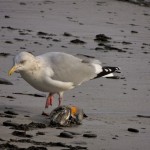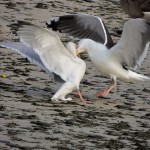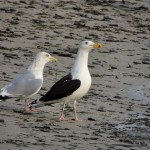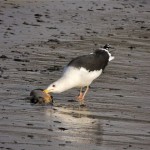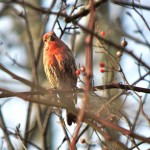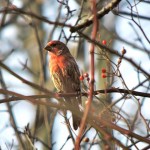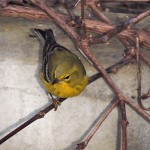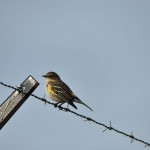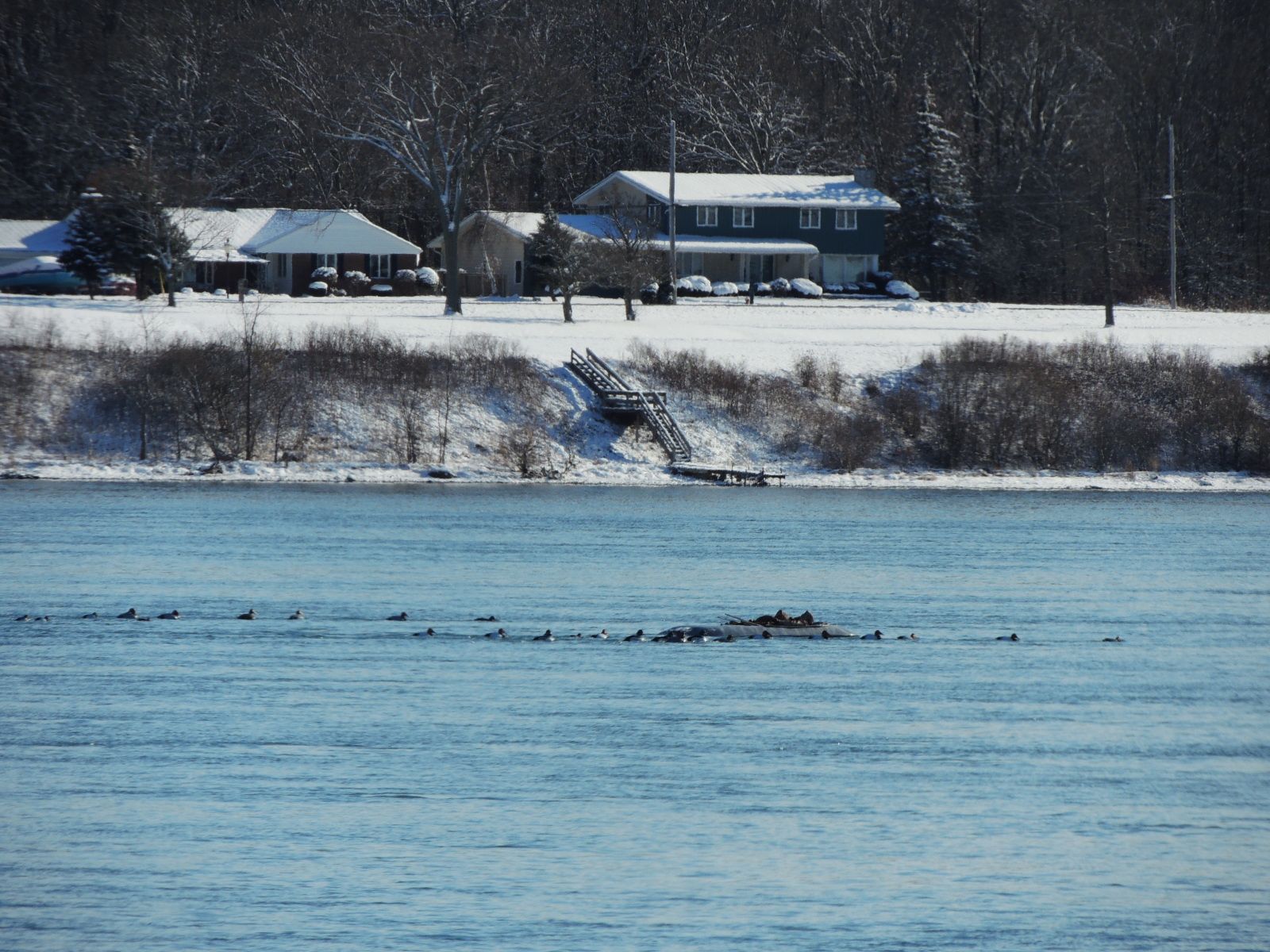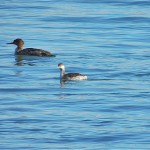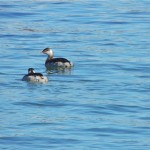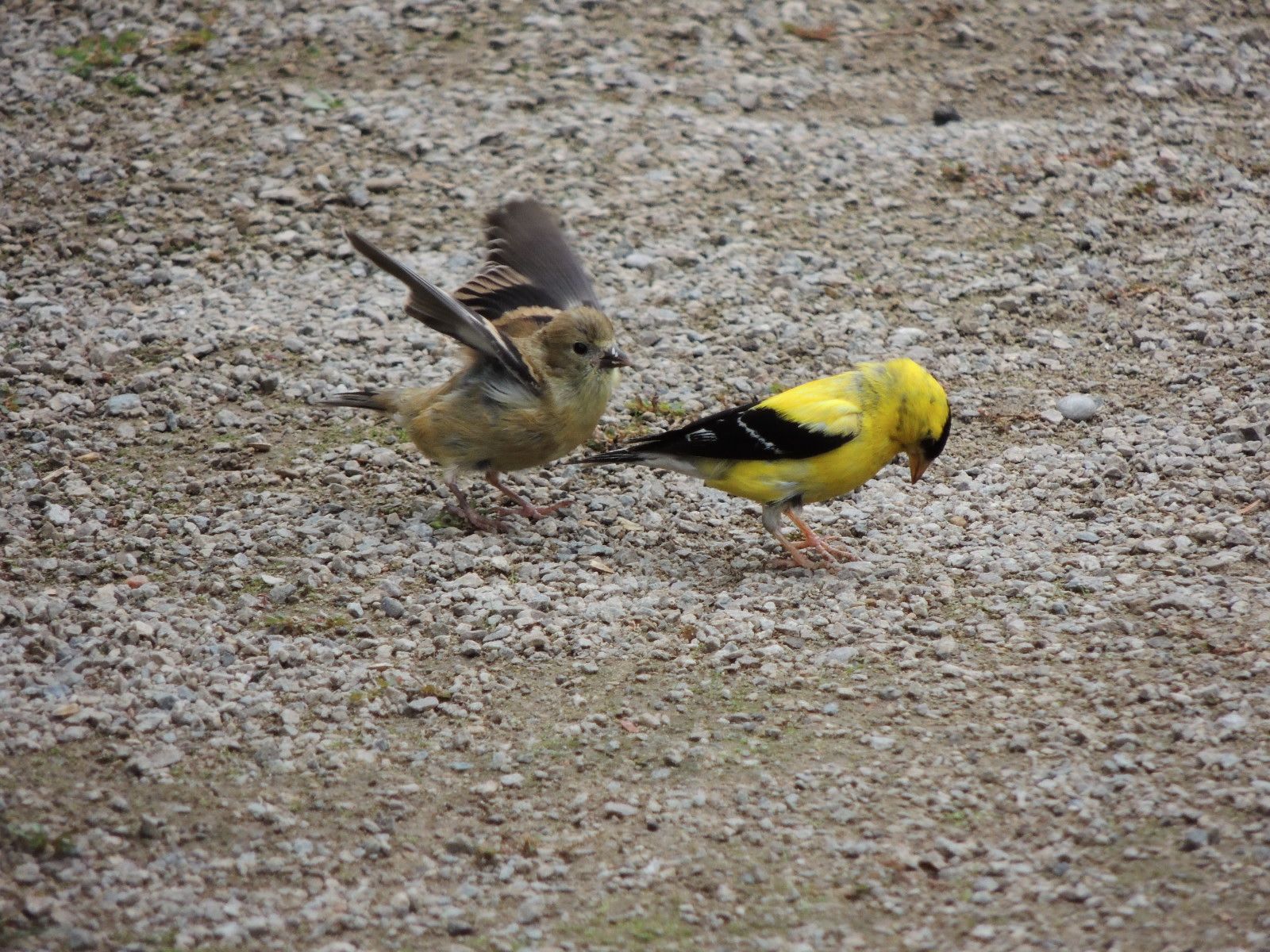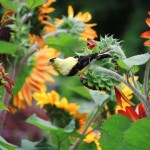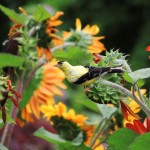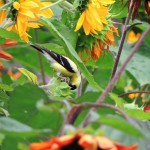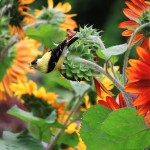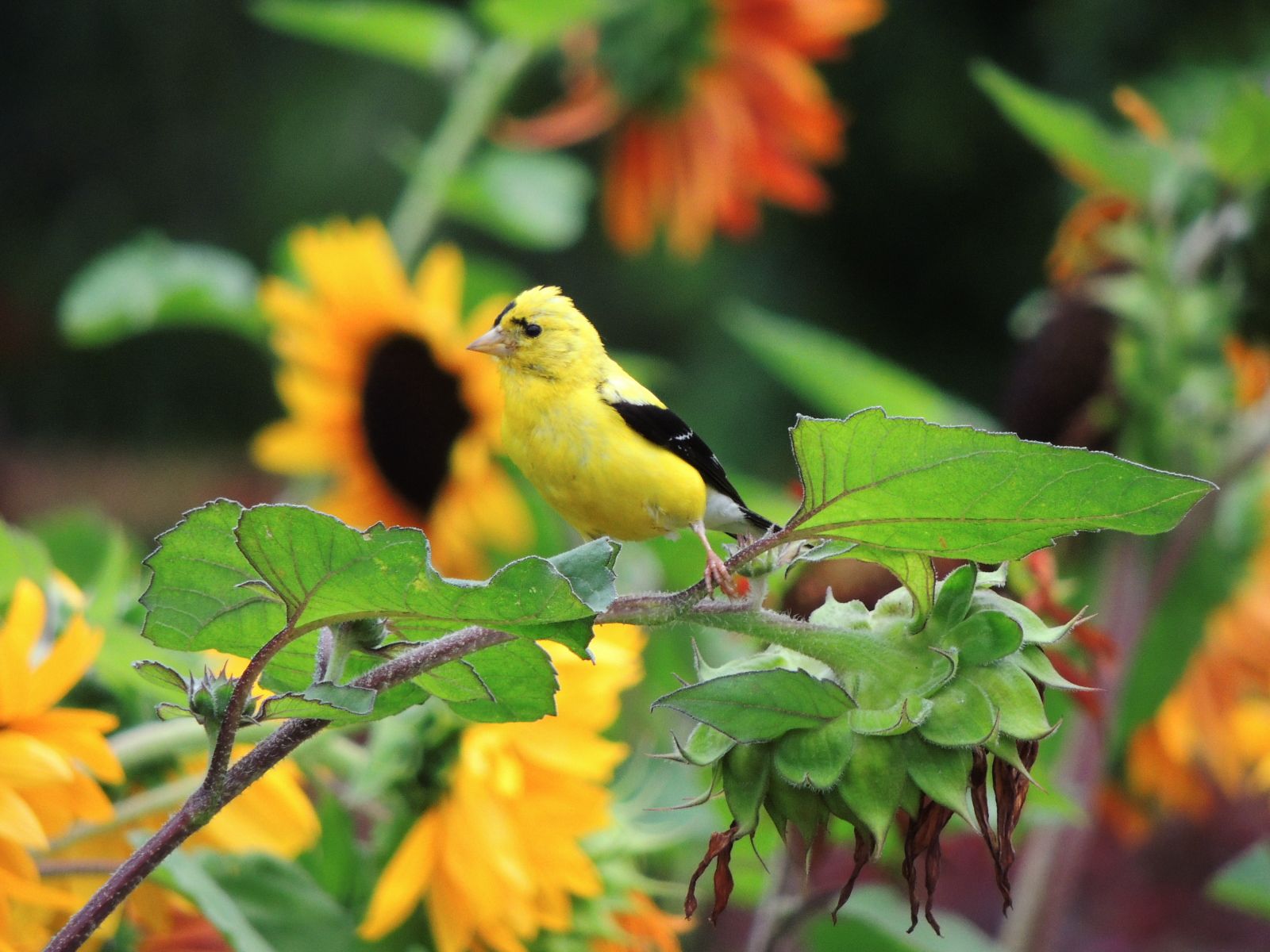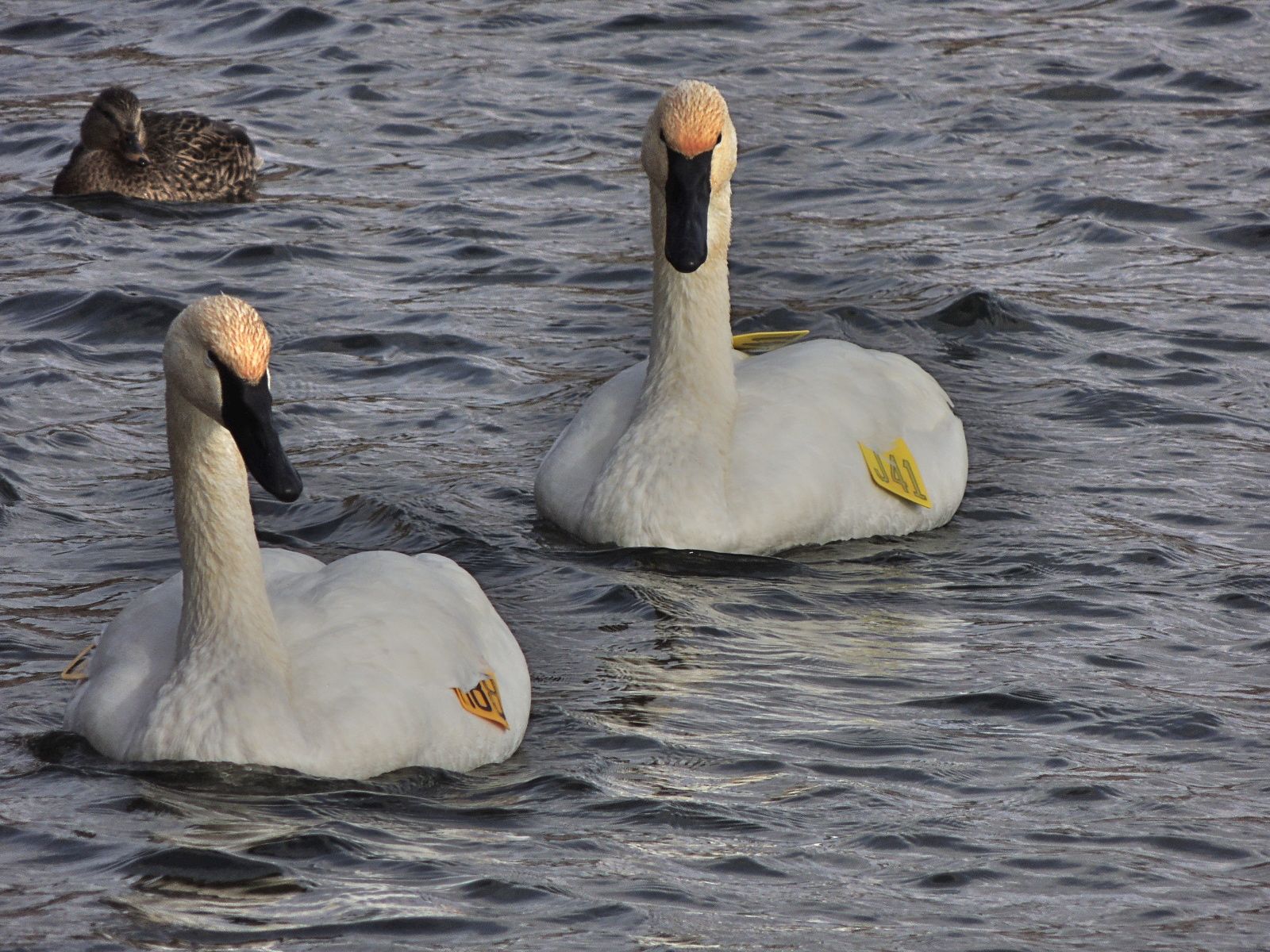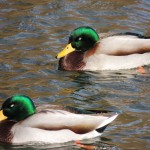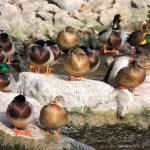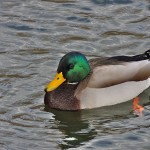5 December 2013. Bronte & Hamilton ON. What a day! Let me count the ways: Great Black-backed Gull, Nashville Warbler, House Finches galore, Golden Crowned Kinglet, Pine Warbler, Yellow-rumped Warbler, Snowy Owl, and Peregrine Falcon – to name just a few.
I’m an acknowledged fair-weather birder and today was a fair weather day. What choice did I have but to check out some of the birdy places that people are talking about.
First stop a yachting harbour just along the lake from home, the place where last winter a Snowy Owl hung around for several weeks; no sign of one today, but I came upon a Great Black Backed Gull (GBBG) gorging itself on a washed-up fish corpse, actually salmon, a delicacy. An obviously hungry and envious Herring Gull (HEGU) who was looking for any opportunity to grab a piece of the pie was monitoring the GBBG, and my presence unnerved the GBBG enough to allow the HEGU to grab a mouthful. I took several photos and then left them to their power struggle while I moved on to see what birds might be seen at a nearby park where unexpected birds are said to show up; I thought I should see what all the fuss was about. It’s a nicely unkempt and wooded park that kind of embraces a large sewage treatment plant, and at the same time buffers it from the sensitivities of the happy neigbourhood; a good thing as it turns out.
Sewage treatment plants have a lot going for them, they’re: very expensive to build, very efficient at advancing civilization through elimination of such dread diseases as cholera, and very attractive to birds. I’ve written several times of the magnetic attraction of sewage settlement ponds. Well it turns out that the more sophisticated urban aeration plants are choice places too. It must be because of their relative warmth (all that flushed-away domestic waste), which attracts and supports insect life and perhaps also through burning waste gasses.
There were lots of House Finches here, more than I’ve seen together for a very long time, they and American Goldfinches, Northern Cardinals and the odd American Robin were scrambling through the tangles of Dog-rose and Goldenrod. Among them a bright Nashville Warbler, which really surprised me for most Nashvilles should be in Mexico or Guatemala by now.
There was more to come: around the fence of the sewage treatment plant were dozens of Yellow-rumped Warblers and a Pine Warbler, both a pleasant surprise although both species are capable of making it through an Ontario winter on a diet of seeds and berries, and if the warmth of the treatment plant sustains an insect population, well they just might do okay. Hope for a mild winter.
And in the also-ran category at this site were a single Golden-crowned Kinglet, an American Tree Sparrow and a Carolina Wren. So, amply satisfied I decided on a change of pace and left to look for a Snowy Owl; and to my delight I found one on the margins of our large industrial harbour.
It was quite close and doing what Snowy Owls often do by day; crouching and trying to look inconspicuous. I posted news of it on our local birding group as follows: “A Snowy Owl was easy to see on the closest island at WIndemere Basin. As I was about to leave I spotted a Peregrine Falcon flying past me, low and fast and just above the canal, it flashed past me heading towards the downstream bridge where it arced up, banked left, smashed the living daylights out of a just-happened-to-be-flying-by passerine and, in a blizzard of feathers, carried it away to dine at leisure. As a postscript, a Red-tailed Hawk registered a fly-by protest at the intruder on his turf.” It all left me quite breathless.
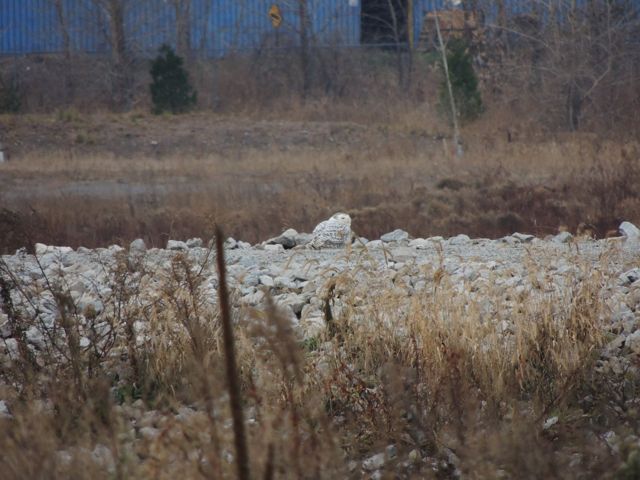
Book-ending the day with a neo-tropical warbler and an Arctic owl is an event that will be hard to replicate. On a day such as this no single could possibly be my Bird of the Day.
This post contains photos only visible if you’re on the website, not if you’re reading this as an email.
